Abstract
An outbreak of polychlorinated biphenyl (PCB) poisoning from the consumption of contaminated rice oil, covering four counties in central Taiwan, was investigated. There were 1843 cases by the end of 1980. The highest frequency of incidence occurred during the period from March to July 1979. The severity of clinical manifestations varied. Most patients showed symptoms of mild or moderate severity. The major age group affected was between 11 and 20 years old. Most of the victims were students and factory workers. The amount of PCB intake in each victim was estimated to be 0.7 to 1.84 g and the latent period from the time of intake to the onset of clinical manifestations was approximately 3 to 4 months. The patients' blood PCB concentrations ranged from 3 ppb to 1156 ppb; 44.27% of 613 patients had levels of 51 to 100 ppb and 27.6% PCB blood levels over 100 ppb. In the course of 3.5 years, 2061 persons were determined to be PCB poisoning victims. Now, except for a few severe cases, their skin symptoms are very much improved. Thirty-nine babies showing hyperpigmentation were born from PCB-poisoned mothers. The fatality rate was high: eight of them died. Another 24 deaths were reported among the PCB-poisoned group, almost half of them (12) from hepatoma, liver cirrhosis or liver diseases with hepatomegaly.
Full text
PDF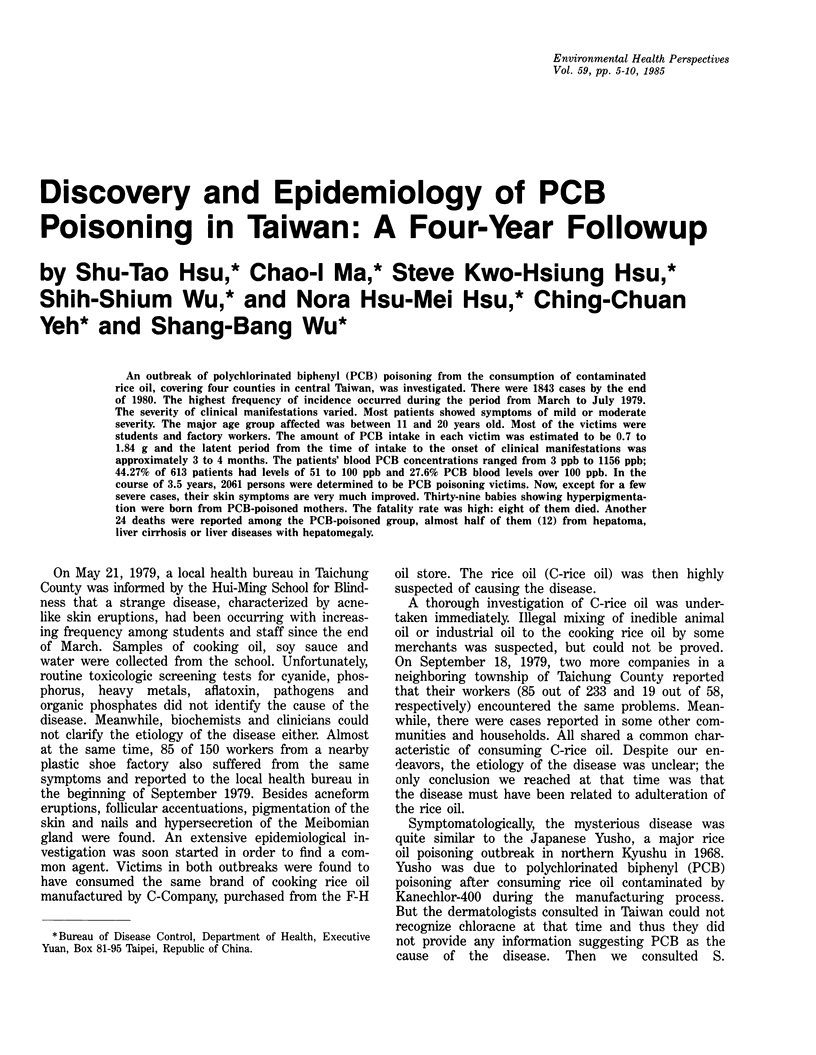
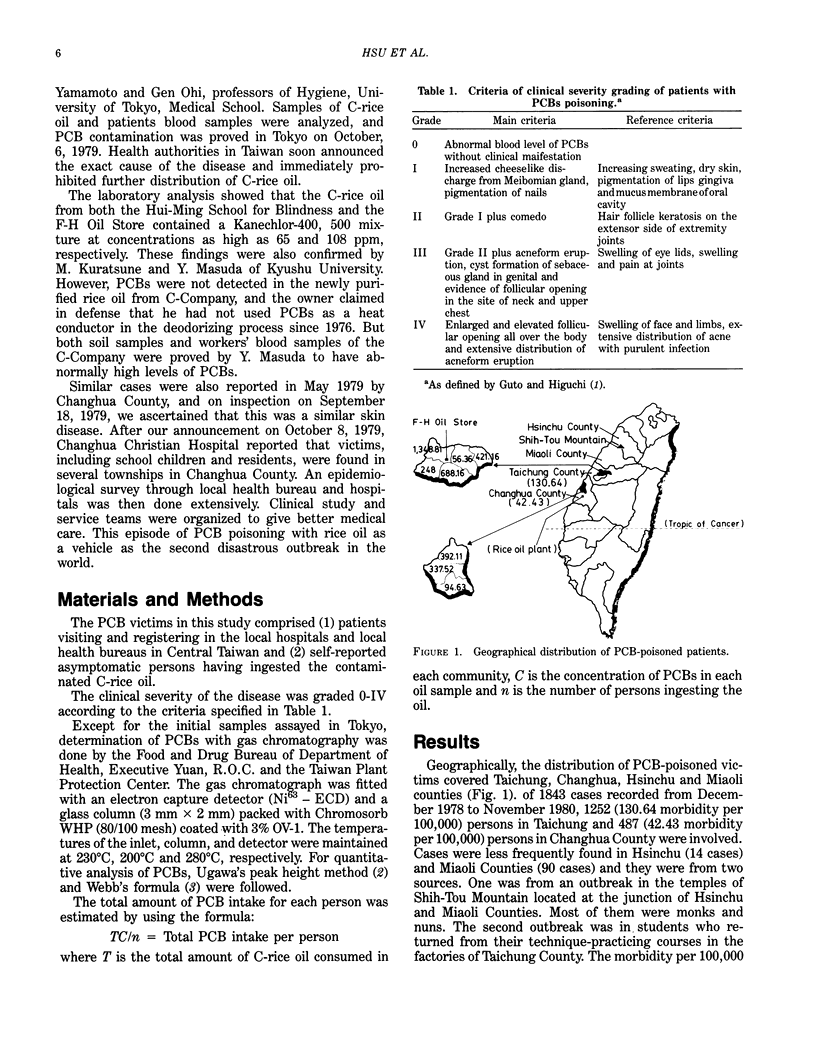
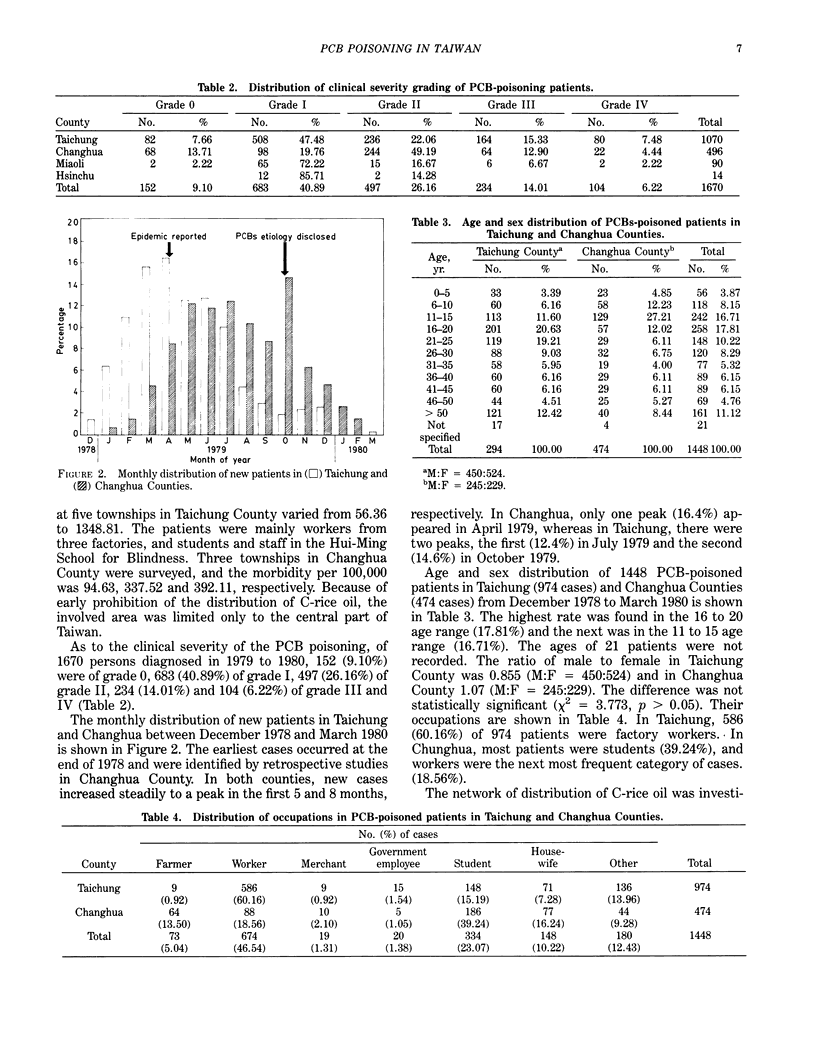
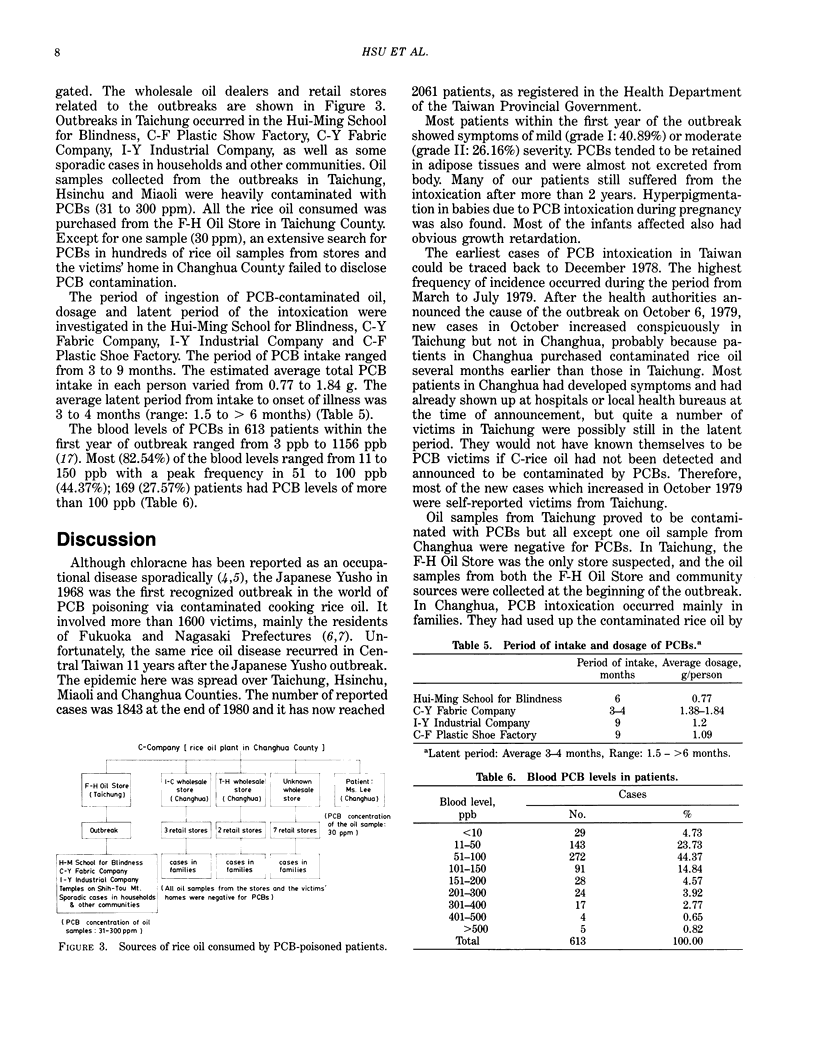
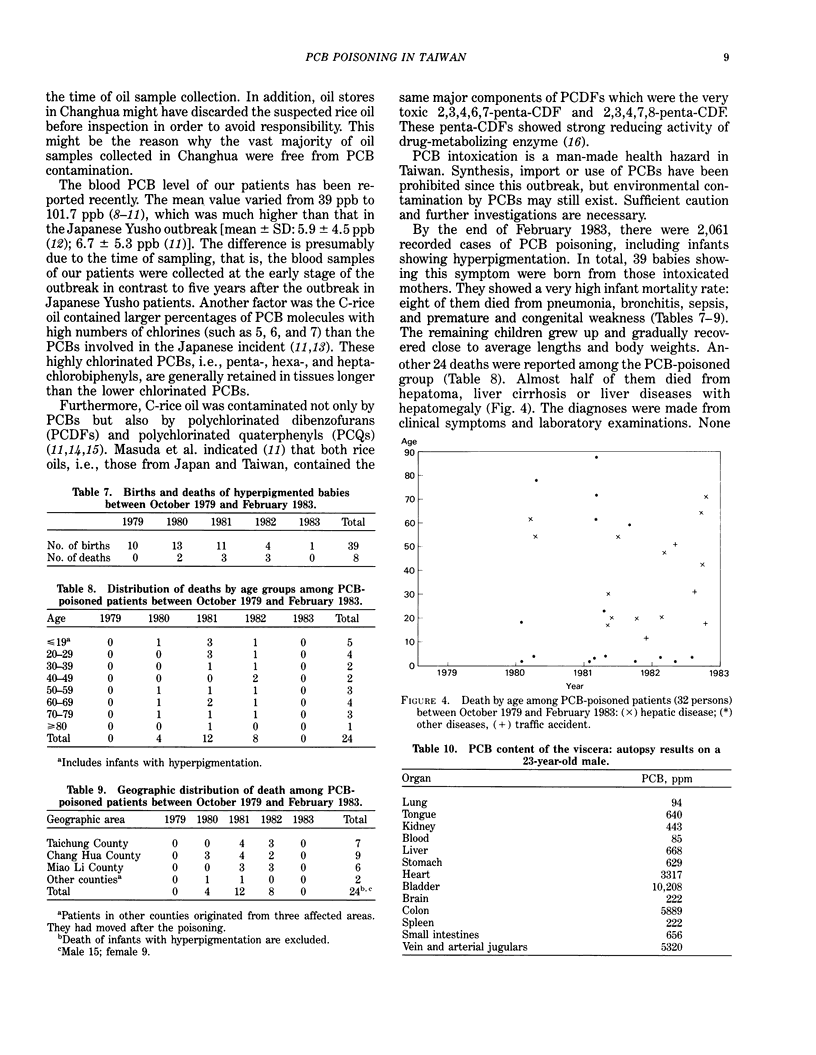
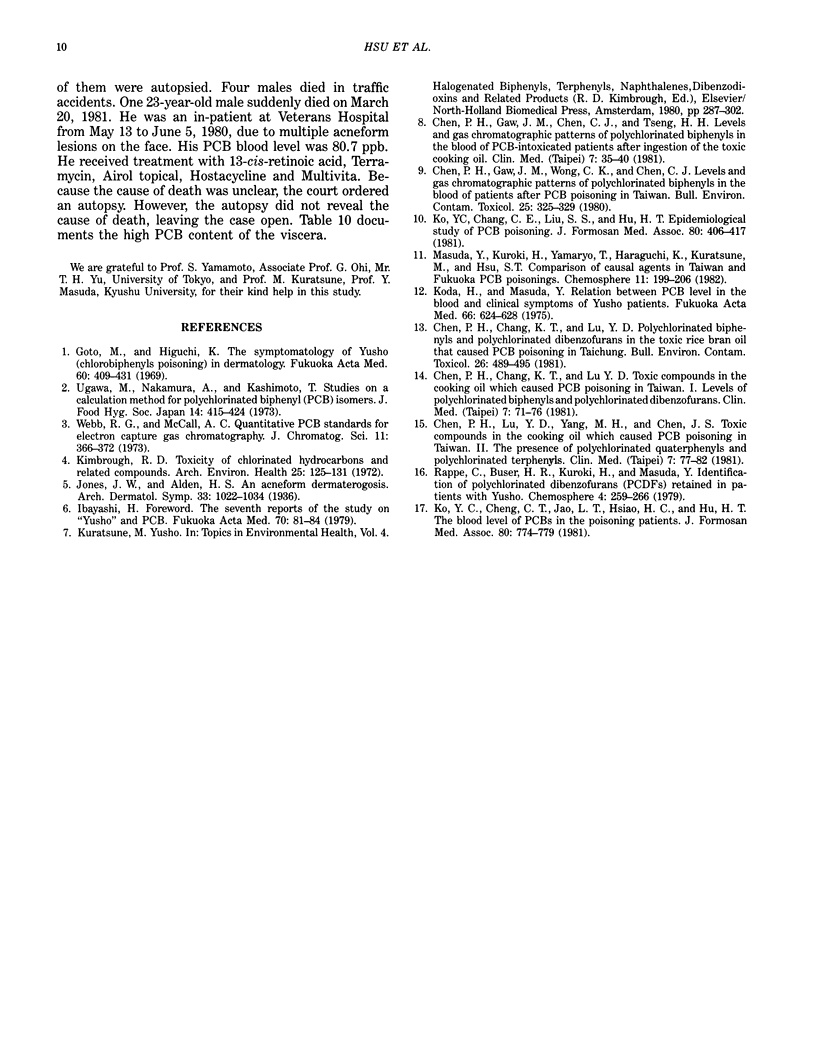
Selected References
These references are in PubMed. This may not be the complete list of references from this article.
- Chen P. H., Chang K. T., Lu Y. D. Polychlorinated biphenyls and polychlorinated dibenzofurans in the toxic rice-bran oil that caused PCB poisoning in Taichung. Bull Environ Contam Toxicol. 1981 Apr;26(4):489–495. doi: 10.1007/BF01622125. [DOI] [PubMed] [Google Scholar]
- Chen P. H., Gaw J. M., Wong C. K., Chen C. J. Levels and gas chromatographic patterns of polychlorinated biphenyls in the blood of patients after PCB poisoning in Taiwan. Bull Environ Contam Toxicol. 1980 Aug;25(2):325–329. doi: 10.1007/BF01985533. [DOI] [PubMed] [Google Scholar]
- Kimbrough R. D. Toxicity of chlorinated hydrocarbons and related compounds. A review including chlorinated dibenzodioxins and chlorinated dibenzofurans. Arch Environ Health. 1972 Aug;25(2):125–131. doi: 10.1080/00039896.1972.10666148. [DOI] [PubMed] [Google Scholar]
- Ko Y. C., Chang C. E., Liu S. S., Hu H. T. [Epidemiological study of PCB poisoning (author's transl)]. Taiwan Yi Xue Hui Za Zhi. 1981 Apr;80(4):406–417. [PubMed] [Google Scholar]
- Ko Y. C., Jao L. T., Cheng C. T., Hsu S. T., Hsiao H. C., Hu H. T. [The blood level of PCB in the poisoned patients (author's transl)]. Taiwan Yi Xue Hui Za Zhi. 1981 Aug;80(8):774–779. [PubMed] [Google Scholar]
- Koda H., Masuda Y. [Relation between PCB level in the blood and clinical symptoms of yusho patients (author's transl)]. Fukuoka Igaku Zasshi. 1975 Oct;66(10):624–628. [PubMed] [Google Scholar]
- Webb R. G., McCall A. C. Quantitative PCB standards for electron capture gas chromatography. J Chromatogr Sci. 1973 Jul;11(7):366–373. doi: 10.1093/chromsci/11.7.366. [DOI] [PubMed] [Google Scholar]


